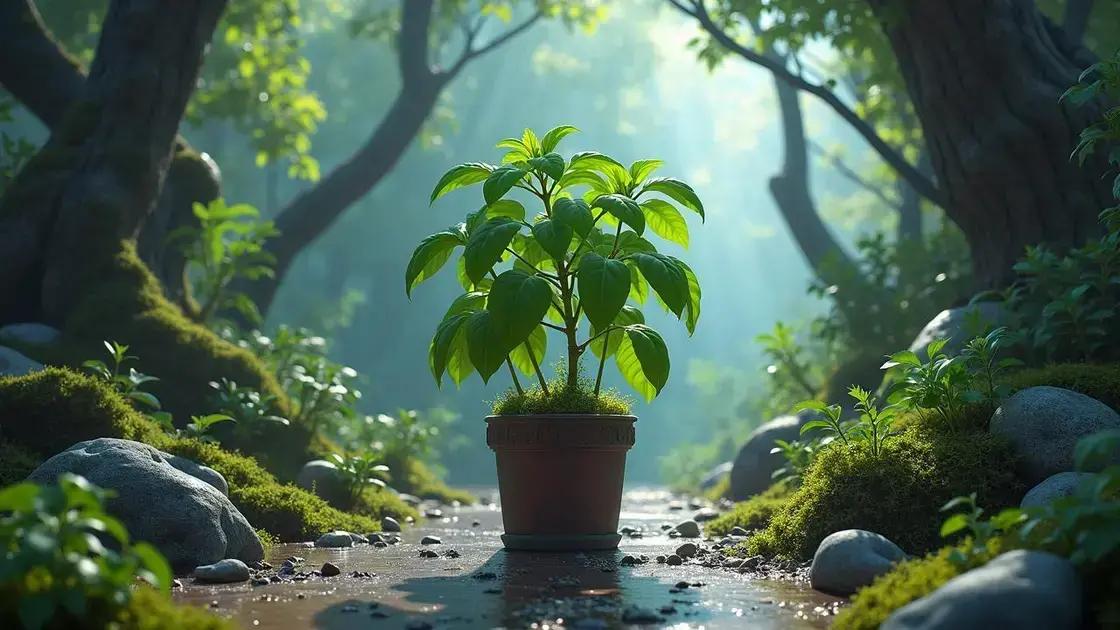How to Care for Basil Plant in a Pot: 5 Essential Tips for Growth
How to care for basil plant in a pot can be a delightful journey. Elevating your gardening skills starts with understanding what your basil needs to thrive. This aromatic herb can easily transform your dishes and uplift your cooking experience. Let’s dive into the essential tips for nurturing your potted basil.
Table of Contents
ToggleEssential watering schedule for potted basil
How to care for basil plant in a pot effectively involves establishing an essential watering schedule. Watering your basil plant at the right frequency is crucial for healthy growth and vibrant flavor.
Understanding your basil’s watering needs
- Basils thrive with consistent moisture but don’t like soggy soil.
- Overwatering can lead to root rot, while underwatering might stifle growth.
Key points for a successful watering schedule
- Check soil moisture regularly by sticking your finger about an inch deep into the soil.
- Water when the top inch of soil feels dry to the touch.
- Adjust your watering frequency based on the season; basil may need more water in the summer.
- Consider using room temperature water, which basil plants prefer.
Watering tips for optimal results
- In hot weather: Monitor your basil daily and be prepared to water once or twice.
- In cooler months: Water less frequently, generally about once a week.
- Utilize self-watering pots to maintain moisture levels better.
Common questions about basil watering
- What happens if I overwater my basil?
It can lead to root rot and yellowing leaves. - How do I know when to water again?
Wait until the top inch of soil is dry.
Conclusion: Perfecting your watering routine
Ultimately, a well-planned watering routine is key to growing robust basil plants. To delve deeper into caring for your plants, consider exploring indoor gardening techniques.
Optimal soil requirements for healthy basil

Optimal soil requirements for healthy basil are crucial for ensuring robust plant growth. Knowing the right soil type and composition can significantly impact the flavor and vitality of your basil plants.
Characteristics of ideal basil soil
- Well-draining: Basil thrives in soil that allows for excess water to escape, preventing root rot.
- Nutrient-rich: A mixture that offers organic matter, such as compost, helps enrich the soil.
- pH balance: Aim for a soil pH between 6.0 and 7.0, slightly acidic to neutral is best for basil.
Recommended soil mixtures for potted basil
- All-purpose potting mix: Contains balanced nutrients and drainage properties.
- Custom blend: Combine peat moss, perlite, and compost for optimal results.
- Commercial herb mixes: Some stores offer pre-mixed soil specifically formulated for herb gardening.
How to assess your soil for basil plants
- Conduct a moisture test: Make sure the soil is not too compacted and drains well by pouring water into the pot.
- Check for nutrient content: Use soil testing kits available at garden centers to verify nutrient levels.
- Observe plant performance: Yellowing leaves or stunted growth can indicate poor soil quality.
Frequently asked questions about basil soil
- What is the best soil for basil in pots?
A well-draining organic mix is ideal. - Do I need to amend my soil?
Regularly adding compost can enhance nutrient content.
Conclusion: Providing the best soil for your basil
By setting up optimal soil conditions, you can ensure your basil plants flourish. For more gardening tips, consider exploring indoor gardening techniques.
Sunlight exposure: The perfect spot for basil growth
Sunlight exposure: The perfect spot for basil growth is vital for cultivating healthy basil. Understanding how much light your basil needs can significantly impact its success.
Basil’s sunlight preferences
- Basil plants thrive in full sun, requiring 6 to 8 hours of direct sunlight daily.
- Bright, indirect light is acceptable but can lead to legginess.
- Positioning basil in the right light boosts flavor intensity and plant resilience.
Best locations for growing basil
- Windowsills facing south or west: Ideal for maximum sunlight exposure.
- Outdoor gardens: Choose areas that are shielded from wind yet receive ample sunlight.
- Indoor setups: Consider using grow lights if natural light is insufficient.
Signs your basil is getting sufficient sunlight
- Rich green leaves: Healthy basil boasts vibrant foliage.
- Strong growth pattern: Plants should grow upright rather than lanky.
- Compact structure: Well-lit basil tends to remain bushy and thick.
Frequently asked questions about basil sunlight
- Can basil survive in low light?
While basil can tolerate low light, it will not thrive or produce robust flavor. - What should I do if my basil is stretching?
Move it closer to a light source to prevent legginess from insufficient light exposure.
Conclusion: Ensuring optimal sunlight for basil
Providing the right amount of sunlight is essential for the growth of your basil plants. For more helpful tips, consider exploring indoor gardening techniques.
In conclusion
Caring for basil plants in a pot requires a comprehensive understanding of their needs, including proper watering schedules, optimal soil conditions, and adequate sunlight exposure. By following the essential tips outlined in this guide, you can nurture healthy and flavorful basil that enhances your culinary creations. Don’t forget to explore more tips on enhancing your indoor garden for a thriving plant collection.

